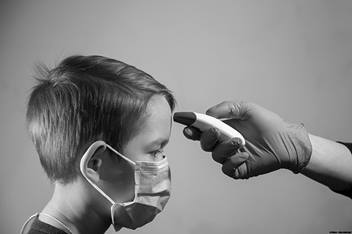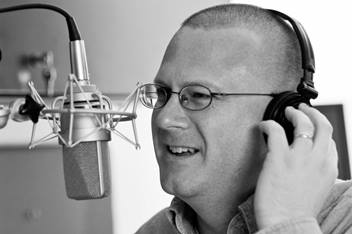Kawasaki Disease
![]()
Kawasaki (Kah-wah-SOCK-ee) Disease, although rare, is the most common cause of acquired (not born with) heart disease in the United States and Japan. More than 80% of the children who get it are younger than 5 years of age. It is more common in boys and in Asians and Asian-Americans.
Kawasaki Disease begins suddenly. The disease can cause blood vessels to become inflamed or swollen throughout the body. If untreated, the swelling can lead to damage of the blood vessel walls, especially those that go to the heart (coronary arteries). A section of a blood vessel wall can balloon out and become weak. This is called an aneurysm. Over time, the inflammation in the vessel goes away but the aneurysm stays. Aneurysms can cause serious problems later, most notably blood clots.
When treatment begins within 10 days of the start of the disease, there is little risk of blood vessel and heart problems.
It is not known what causes the disease. The immune system may be reacting to an unknown virus or there might be a genetic link in families. There is no way to prevent Kawasaki Disease. It is not contagious. It cannot be spread from one person to another.
Symptoms
The first sign of Kawasaki Disease is a high fever (over 101°F, and often as high as 104°F) that lasts more than 4 days. Over the next several days (not all at once), these other key signs may occur:
- The hands and feet get very red and swollen, especially the palms and the soles. Two to three weeks after the start of the fever, the skin on the hands, fingertips and feet usually peels.
- The inside of the mouth and the lips get red. The lips become dry and cracked. The tongue may have rough, red spots. This is called a “strawberry tongue.”
- A red, splotchy rash appears all over the body, especially in the groin area (it fades in about a week).
- Swelling develops in a lymph node on one side of the neck.
- The eyes become red and look "bloodshot" (without any drainage or crusting).
Most children with Kawasaki Disease are also very irritable and fussy. However, not all children have all of these signs. Children may have a milder form, called “incomplete” (atypical) Kawasaki Disease. Both forms can cause damage to blood vessels if not treated right away.
Other less common symptoms include:
Diagnosis
There is no single test to know if a child has Kawasaki Disease. The diagnosis is considered when the child has:
- A high fever for more than 4 days
- At least 4 of the key signs
If Kawasaki Disease is suspected, the child will be hospitalized right away. In the hospital, the doctor may order tests to check the health of his or her heart.
- Electrocardiogram (EKG). This test records the child's heartbeats and shows abnormal rhythms or beats.
- Echocardiogram (ECG). This test uses sound waves to make a picture of the heart and blood vessels.
- Blood and urine tests. These tests are to look for abnormal amounts of blood cells and proteins that signal inflammation.
Treatment
Most children fully recover without any damage to the blood vessels if treatment is started within 10 days. In the hospital, the child will be given:

- Gamma globulin, also called Intravenous Immunoglobulin (IVIG). A small tube, called a catheter or an IV, is placed in a blood vessel. The IVIG medicine is given through this catheter over several hours as soon as the diagnosis is made. IVIG helps reduce the fever and prevent damage to the blood vessels.
- Aspirin therapy. Baby aspirin is given at regular times, day and night. Aspirin helps control fever and inflammation and it keeps blood cells from clumping or forming clots. The dose of aspirin will start out high and be decreased after a few days.
After Your Child Goes Home
It is common that a child will feel irritable and tired for many weeks before getting back to normal. Recovery often takes 6 to 8 weeks or more.
The doctor will tell you:
- Check your child’s temperature each day for three days after discharge.
- Give aspirin as ordered. Your child will need to take aspirin for at least 6 weeks after going home. Usually children should not be given aspirin, but in this case, it is needed and helpful. Problems with aspirin, such as an upset stomach or a burning feeling in the stomach, can be prevented by giving aspirin with food or a glass of milk.
- Do not give your child any other medicines without first checking with the doctor.
- Make sure your child gets enough fluids (at least 3 glasses a day).
- Treat dry lips with Vaselineâand dry skin with unscented lotions or creams.
- Hold off getting vaccines that use live viruses like the MMR and Varicella (chickenpox) for 11 months after having IVIG treatment. Prior to flu season, make sure that your child receives the annual flu shot, especially if still receiving aspirin.
- The activities your child can do, depending on the condition of his or her heart. Usually, more activities will be allowed after the first follow up visit, two weeks after leaving the hospital. Sometimes your child may be able to go back to school or daycare within a week after being discharged.
When to Call the Doctor
Call your child's doctor if you notice:
- A fever more than 100.4°.
- The fever or rash comes back.
- Signs of too much aspirin. If a child is getting too much aspirin, he may complain of ringing in the ears, dizziness, headache, nausea or vomiting more than once, increased bruising or unusual bleeding.
- Your child does not seem like himself. If he seems very tired and does not have enough energy to play, especially after the fever has gone away.
- While taking aspirin, has influenza (“flu”) or chickenpox.
Follow-up Appointments
Your child will need to come to the Kawasaki Disease Clinic regularly for the first few months. Usually, an ECG is ordered at 2 weeks and again at 6 to 8 weeks after treatment is started. The doctor will examine your child to make sure there are no heart problems.
If your child has an aneurysm caused by Kawasaki Disease, the visits to the doctor may be more often. Even with an aneurysm, the long term outlook for your child is good. As he gets older, it will be important that he eat a healthy diet, exercise regularly and not smoke.
HH-I-93 10/87, Revised 4/17 Copyright 1987 Nationwide Children’s Hospital


